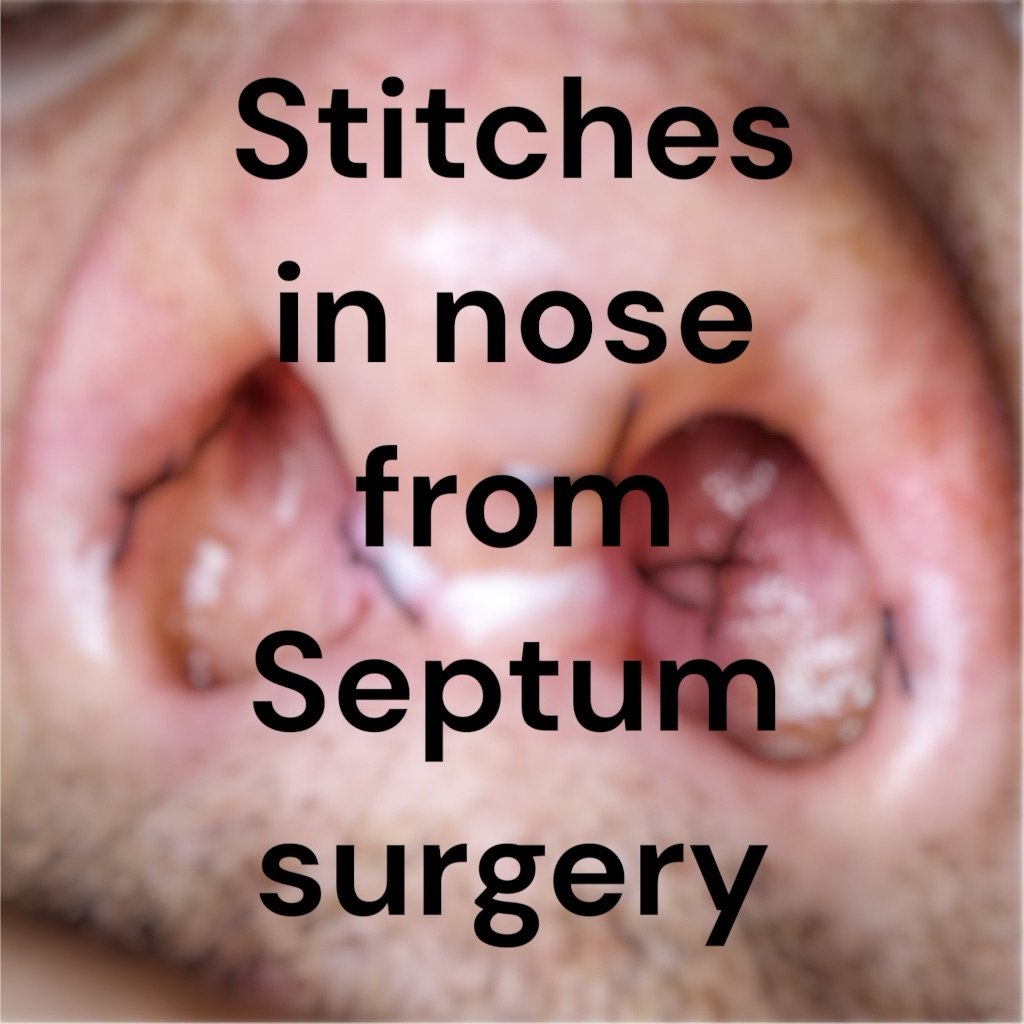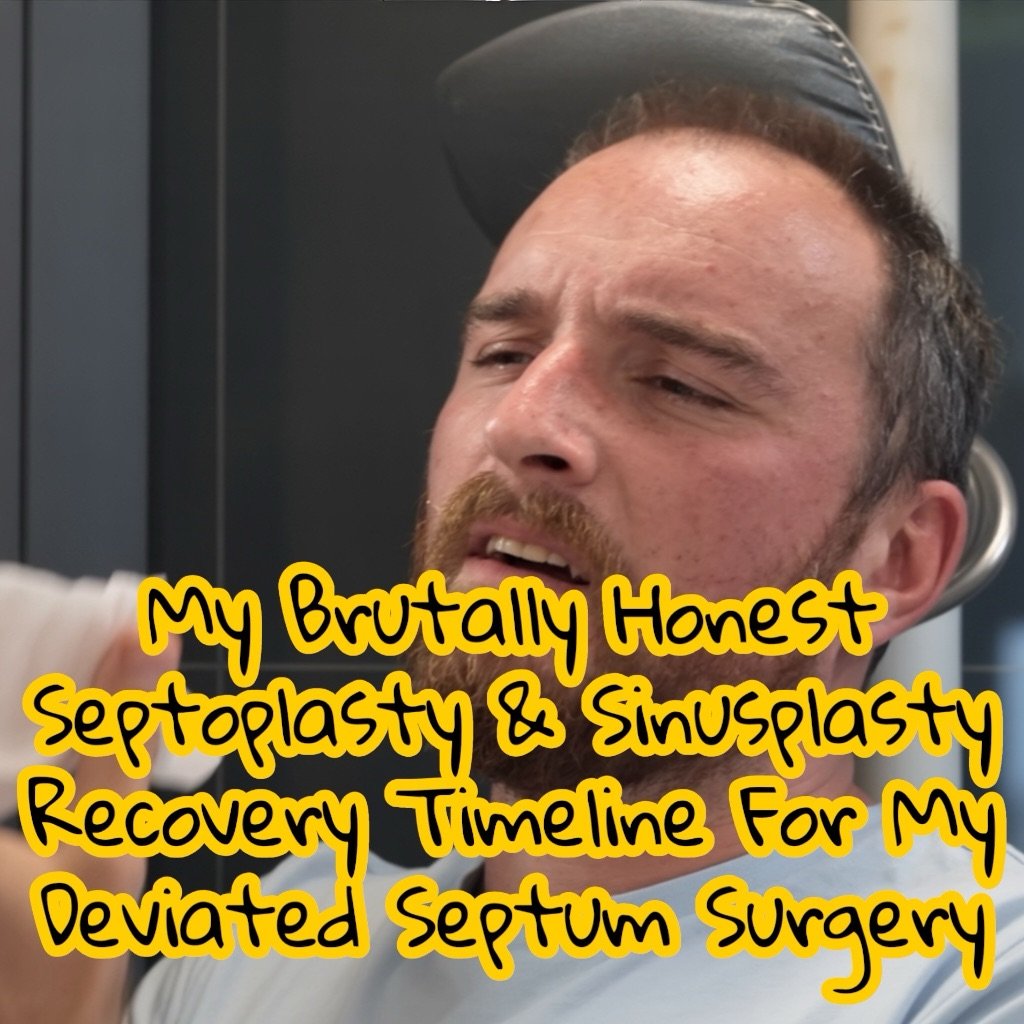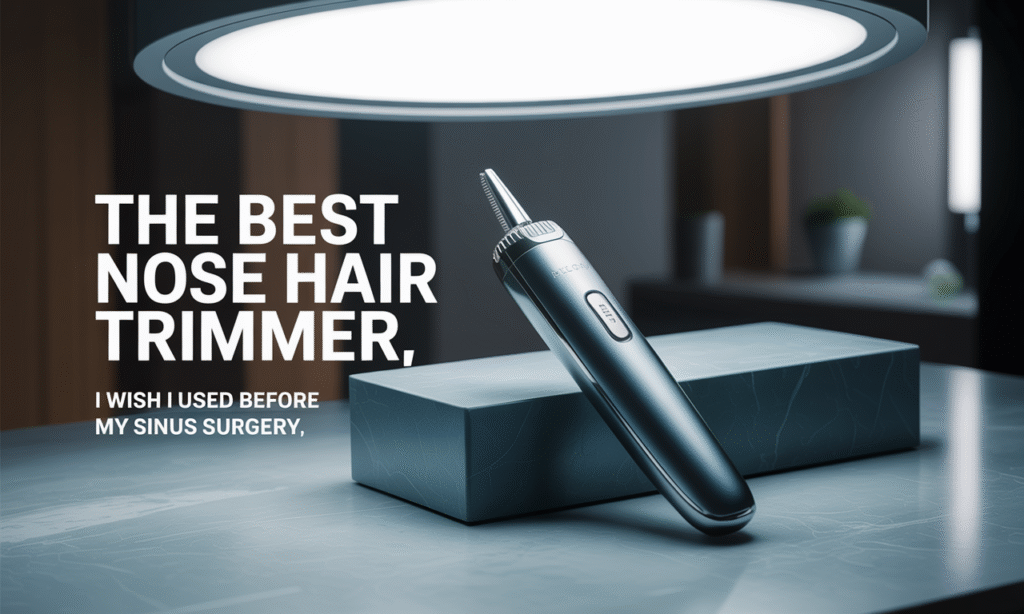
How Long Do Stitches Stay In After Septoplasty (My Honest Answer)
If you’ve recently had a deviated septum corrected like I did, you’re probably wondering the same thing I did: how long do stitches stay in after septoplasty? It’s one of the biggest questions I had going into surgery — and trust me, you’ll still be asking it days into your recovery when those stitches are burning like fire inside your nose.
I had septoplasty with sinus surgery (also called sinusplasty), and this recovery has been no joke. One of the biggest things I wasn’t prepared for was how long the stitches stick around — and how much they impact your comfort level during healing.
Types of Stitches Used During Septoplasty
Before surgery, I didn’t even think to ask what kind of stitches they were going to use. I assumed they’d be dissolvable stitches, and in my case, they were. But even though they technically dissolve, they sure don’t feel like they’re going anywhere for a while.
There are two main types of septoplasty stitches:
- Dissolvable (absorbable) – These are most common. They slowly break down on their own over 1–4 weeks.
- Non-dissolvable (removable) – Sometimes used if the doctor wants more control over the healing tissue. These need to be taken out manually, usually at your follow-up.
In my case, it was dissolvable stitches for septoplasty, but they still caused burning, swelling, and a constant pulling sensation in my upper lip and nostril wall. Even though they were supposed to be breaking down, I could still feel the irritation for days.
The ENT never made it crystal clear what kind of stitches I had until after the surgery — and by then, I was too focused on surviving the pain to ask. If you haven’t gone through surgery yet, I highly recommend you ask what kind of stitches they’ll be using.

My Personal Experience With Septoplasty Stitches
Let me be real here — the stitches were probably my #2 worst part of this recovery, right behind the nasal stents. You don’t realize how sensitive the inside of your nose is until it’s stitched up and swollen. It’s not just a little discomfort — it’s a burning, aching, nerve-pinching kind of pain that makes every little facial movement miserable.
From day one, I could feel:
- Sharp stinging near the base of my nose
- Burning pain when I tried to talk, yawn, or move my lips
- Swelling that felt like it was pushing the stitches into my skin even more
Sometimes it even felt like the stitches were pulling when I swallowed or smiling slightly, which made things like drinking and talking super frustrating.
On day 3 of my recovery, the pain from those stitches (combined with the stents) had me in tears, and I’m not someone who cries easily. That’s how intense it got.
If you want to read exactly how those early days played out for me, I’ve shared my full experience in my day-by-day septoplasty recovery story that tells the truth about just how hard this recovery can really be.

Typical Timeline for Septoplasty Stitches to Dissolve or Be Removed
So, back to the big question — how long do stitches stay in after septoplasty?
Most ENT surgeons will tell you the average timeline is:
- 7 to 14 days for dissolvable stitches to break down
- 10 to 21 days if you have thicker or deeper stitches
- Follow-up visit around week 1 or 2 to check progress
- Manual removal only if stitches are non-absorbable or stuck
In my case, the dissolvable stitches took longer than I expected. Even by day 7, I was still feeling them just as much as day 3. It wasn’t until late in week 2 that the pain around the stitch areas started letting up.
But here’s the thing most people don’t realize:
Even dissolving stitches still feel like they’re “there” for a while — even if they’ve started breaking down. You may notice one start to loosen, or even see small fragments in your nasal rinses, but the burning and irritation may still linger.
If you’re ever unsure whether your stitches are dissolving properly or if they feel worse over time, definitely call your ENT. Some people end up needing a couple of stubborn ones removed manually if they don’t fully absorb.
What It Feels Like When Septoplasty Stitches Start to Dissolve
I wasn’t sure what to expect when the stitches started breaking down — and honestly, it’s not as obvious as you might think.
With dissolvable stitches after septoplasty, you won’t necessarily see them fall out like with external stitches on your skin. It’s more like:
- You feel less tightness or pulling in your nostrils
- You might notice a mild itch or tingle as the material loosens
- You could spot tiny string-like fragments during a saline rinse
For me, I first noticed the change around day 10 or so. The burning sensation started shifting into more of a dull soreness, and a couple of rinses brought out small thread-like pieces — which I realized were bits of stitch material finally letting go.
That said, just because they’re dissolving doesn’t mean the pain stops immediately. In my case, the nerves were still so fired up that even when the stitches were nearly gone, the area stayed tender for a while.

How to Care for Septoplasty Stitches During Recovery
Nobody gives you a clear playbook for how to care for stitches after septoplasty, but here’s what worked (and didn’t) for me.
What Helped:
- Saline nasal spray, often
- Not the big squeeze bottles — just light mist
- Helped keep the area from drying into a crusted brick wall
- Humidifier running 24/7
- I sat over it sometimes for 30+ minutes just to try to soften things up
- (See my humidifier article for the one that worked best for me)
- Letting crusts soften before touching anything
- Never dig, even if it looks like it’s “just hanging there”
What Made It Worse:
- Blowing my nose too soon
- It created pressure that made the stitches sting
- Touching my nostrils, even by accident
- One slight bump = full-body flinch
- Skipping rinses
- Things dried out fast if I skipped even one round
Remember, stitches inside your nose are surrounded by swelling, mucus, and blood. It’s not a clean, dry healing environment like a cut on your arm — so be gentle and patient.
What If Stitches Don’t Dissolve or Cause Problems?
While most stitches after sinus surgery do dissolve on their own, it’s totally possible for one or two to hang around longer than they should. I actually started to wonder this myself around week 3, because the irritation wouldn’t quit.
Here are warning signs that something might be off:
- Sharp poking from inside the nostril
- Visible stitch sticking out days or weeks later
- Increasing pain, not decreasing
- Yellow crusting or foul smell, which could signal infection
If any of that happens, don’t try to pull it out yourself. I know it’s tempting when something’s right at the edge and hurting like crazy — but you risk bleeding, infection, and making the recovery worse.
I talked to a few people who had to go back to the ENT to get one or two stubborn stitches manually removed, especially if they got stuck under dried mucus or scar tissue.
Always follow up if your pain suddenly gets worse, especially after a week or more. That’s not how normal sinus surgery recovery is supposed to go.
Extra Challenges Nobody Tells You About
Here’s what really caught me off guard: it wasn’t just the stitches that hurt — it was everything around the stitches too.
Nobody told me how nose hairs would trap dried blood, wrap around the stitches, and make every crusty spot a landmine. Trying to even gently clean the inside of my nostrils felt like trying to pull a fishhook out of my skin.
And it wasn’t just inside the nose — the pain spread to:
- My upper lip and front teeth, from nerve inflammation
- My TMJ and jaw, which got worse the longer I couldn’t eat normally
- Even my lips, which got dry and cracked from constant mouth breathing
I wrote more about that in my real-time recovery breakdown, but if you’re preparing for this surgery, stock up on lip balm, humidifier water, and patience. These aren’t little annoyances — they’re part of the big picture.
My Honest Advice for Anyone Worried About Septoplasty Stitches
If you’re reading this and you’re nervous about septoplasty stitches — I get it. I was too. Even after the surgery, I kept wondering if everything I was feeling was normal or if something was wrong. The truth is, no two recoveries are exactly alike, but there are some real constants I’ve learned.
Here’s my honest advice:
- Assume the stitches will hurt more than you expect. The burning, pulling, and pressure is intense — especially around days 2–5.
- Don’t panic if they feel like they’re not going away. Dissolvable stitches after septoplasty don’t vanish overnight. Mine lingered well into week two, and even once they were breaking down, the irritation stayed.
- Talk to your ENT if something feels off. Don’t just suffer in silence. If the pain is getting worse or you suspect something is poking or stuck, get checked out.
- Get ahead of the dryness. Between mouth breathing, dried blood, and stitches pulling on sensitive tissue, the dryness makes everything worse. A humidifier saved me more than once.
- Let someone else clean the house. Seriously. I couldn’t even lean forward without throbbing pressure through my nose. Take recovery seriously.
And if you want to know what those first five days were like for me (spoiler: they were rough), check out my full day-by-day septoplasty recovery article where I share exactly what happened each day — including the part where I actually broke down crying from the pain.

How Long Do Stitches Stay In After Septoplasty — Final Thoughts
So… how long do stitches stay in after septoplasty?
In most cases — especially if you have dissolvable stitches like I did — you’re looking at 10 to 14 days before they start to break down noticeably. Some may linger up to 3 or 4 weeks, depending on how your body heals and how aggressive the surgery was.
But even after they’re “technically gone,” the tenderness, swelling, and nerve irritation can stick around longer — especially if you also had sinusplasty or your ENT used more internal support like stents.
If you’re in the middle of recovery and wondering why your stitches still hurt — you’re not alone. It doesn’t mean something’s wrong. It just means this recovery is slow, and those tiny pieces of thread are playing a big role in how your nose heals.
Keep taking care of yourself. Keep rinsing. Keep resting.
And if you need encouragement, remember — I’ve been there. This part sucks, but it will pass, and yes… you’ll eventually breathe easy again.
As an Amazon Associate we earn from qualifying purchases through some links in our articles.



